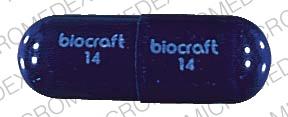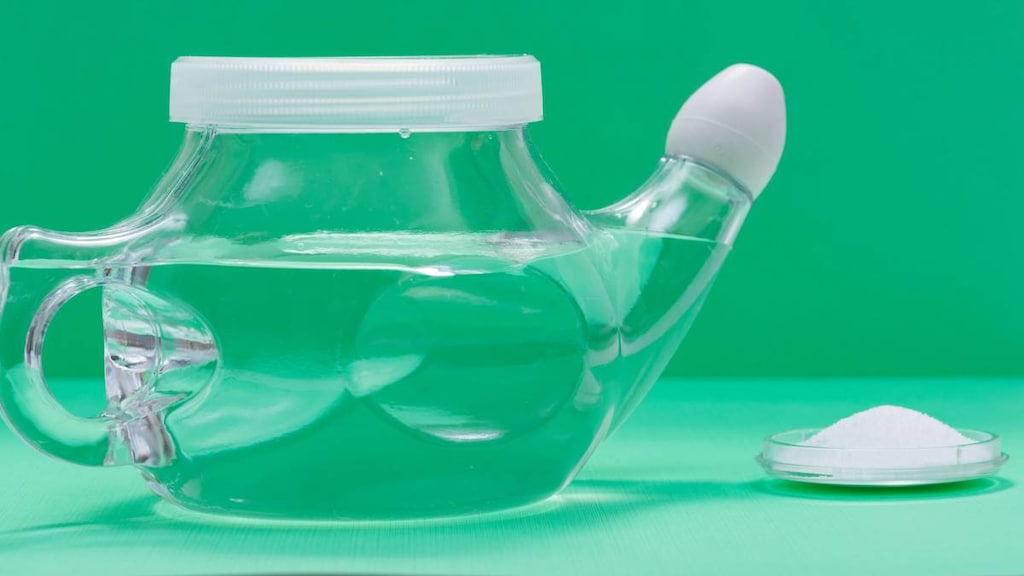Dosage Forms
Excipient information presented when available (limited, particularly for generics); consult specific product labeling. [DSC] = Discontinued product
Solution, Intravenous:
Generic: 1 g/50 mL (50 mL); 2 g/50 mL (50 mL)
Solution Reconstituted, Injection:
Generic: 1 g (1 ea); 2 g (1 ea [DSC])
Solution Reconstituted, Injection [preservative free]:
Generic: 1 g (1 ea); 2 g (1 ea); 10 g (1 ea)
Pharmacology
Mechanism of Action
Inhibits bacterial cell wall synthesis by binding to one or more of the penicillin-binding proteins (PBPs); which in turn inhibits the final transpeptidation step of peptidoglycan synthesis in bacterial cell walls, thus inhibiting cell wall biosynthesis. Bacteria eventually lyse due to ongoing activity of cell wall autolytic enzymes (autolysins and murein hydrolases) while cell wall assembly is arrested.
Pharmacokinetics/Pharmacodynamics
Distribution
Into bile, amniotic, and pleural fluids; insignificant concentrations in CSF and aqueous humor
Metabolism
Hepatic
Excretion
Urine and bile (unchanged drug)
Time to Peak
Serum: IM: 30 minutes; IV: 5 minutes
Half-Life Elimination
Neonates (PNA: 8 to 15 days): 1.6 hours
Infants and Children ≤2 years: 0.9 to 1.8 hours
Adults: 20 to 30 minutes; prolonged with renal impairment
Protein Binding
~94% (mainly albumin)
Use: Labeled Indications
Staphylococcal infections: Treatment of infections caused by penicillinase-producing staphylococci that have demonstrated susceptibility to the drug; empiric therapy in suspected cases of resistant staphylococcal infections.
Limitations of use: Oxacillin should not be used in infections caused by organisms susceptible to penicillin G.
Use: Off Label
Catheter-related bloodstream infectionsyes
IDSA clinical practice guidelines suggest that oxacillin may be used as first-line therapy for the treatment of catheter-related bloodstream infections caused by methicillin-susceptible S. aureus or methicillin-susceptible, coagulase-negative Staphylococcus species.
Skin and soft tissue necrotizing infectionsyes
Based on the Infectious Diseases Society of America (IDSA) guidelines for the diagnosis and management of skin and soft tissue infections (SSTI), oxacillin is an effective and recommended treatment for necrotizing infections of the skin, fascia, and muscle due to methicillin-sensitive Staphylococcus aureus.
Surgical site infectionsyes
Based on the Infectious Diseases Society of America (IDSA) guidelines for the diagnosis and management of skin and soft tissue infections (SSTI), oxacillin is an effective and recommended option for treatment of surgical site infections occurring after surgery of the trunk or extremity (away from the axilla or perineum). Systemic antibacterials are not routinely indicated for surgical site infections, but may be beneficial (in conjunction with suture removal plus incision and drainage) in patients with significant systemic response (eg, temperature >38.5ºC, heart rate >110 beats per minute, erythema/induration extending >5 cm from incision, WBC >12,000/mm3).
Contraindications
Hypersensitivity (eg, anaphylaxis) to oxacillin, any penicillin, or any component of the formulation.
Dosage and Administration
Dosing: Adult
Note: May contain a significant amount of sodium; consult product specific labeling for amount.
Catheter-related bloodstream infections (off-label use): IV: 2 g every 4 hours (Mermel 2009)
Endocarditis, treatment: Methicillin-susceptible Staphylococcus aureus (MSSA) (off-label dose; AHA [Baddour 2015]): IV:
Native valve: 12 g/day in 4 or 6 divided doses (ie, 2 g every 4 hours or 3 g every 6 hours) for 6 weeks. Note: Dosing intended for complicated right-sided infective endocarditis (IE) or left-sided IE. For uncomplicated right-sided IE, 2 weeks of therapy may be adequate
Prosthetic valve: 12 g/day in 6 divided doses (ie, 2 g every 4 hours) for at least 6 weeks (use with rifampin for entire course and gentamicin for first 2 weeks)
Meningitis, bacterial: Methicillin-susceptible S. aureus: (off-label dose): IV: 2 g every 4 hours; consider addition of rifampin if organism is susceptible and prosthetic material is present (IDSA [Tunkel 2004]; IDSA [Tunkel 2017])
Osteomyelitis, native vertebral (off-label dose): Staphylococcus (oxacillin-susceptible): IV: 1.5 to 2 g every 4 to 6 hours or via continuous infusion for 6 weeks (IDSA [Berbari 2015])
Prosthetic joint infection: IV: 2 g every 4 hours with rifampin
Staphylococcus aureus, methicillin-susceptible infections, including brain abscess, bursitis, erysipelas, mastitis, mastoiditis, osteomyelitis, perinephric abscess, pneumonia, pyomyositis, scalded skin syndrome, toxic shock syndrome: IV: 2 g every 4 hours
Skin and soft tissue infections (IDSA [Stevens 2014]): IV:
Due to methicillin-susceptible Staphylococcus aureus (MSSA): 1 to 2 g every 4 hours for 7 to 14 days
Necrotizing infection due to MSSA (off-label use): 1 to 2 g every 4 hours; continue until further debridement is not necessary, patient has clinically improved, and patient is afebrile for 48 to 72 hours
Surgical site infections (trunk or extremity [away from axilla or perineum]) (off-label use): IV: 2 g every 6 hours (IDSA [Stevens 2014])
Dosing: Geriatric
Refer to adult dosing. Note: May contain a significant amount of sodium; consult product specific labeling for amount. The geriatric population may respond with a blunted natriuresis to salt loading. This may be clinically important in diseases such as congestive heart failure.
Dosing: Pediatric
General dosing, susceptible infection (Red Book [AAP 2015]):
Mild to moderate infections: Infants, Children, and Adolescents: IM, IV: 100 to 150 mg/kg/day in divided doses every 6 hours; maximum daily dose: 4,000 mg/day
Severe infections: Infants, Children, and Adolescents: IM, IV: 150 to 200 mg/kg/day in divided doses every 4 to 6 hours; maximum daily dose: 12 g/day
Endocarditis, treatment: Children and Adolescents: IV: 200 mg/kg/day in divided doses every 4 to 6 hours; maximum daily dose: 12 g/day; treat for at least 4 weeks; longer durations may be necessary; may use in combination with gentamicin for some resistant organisms (AHA [Baltimore 2015])
Meningitis/Ventriculitis: Infants, Children, and Adolescents: IV: 200 mg/kg/day in divided doses every 6 hours; maximum daily dose: 12 g/day (IDSA [Tunkel 2004]; IDSA [Tunkel 2017])
Pneumonia, community-acquired (CAP) moderate to severe infection, S. aureus (methicillin-susceptible): Infants >3 months, Children, and Adolescents: IV: 150 to 200 mg/kg/day divided every 6 to 8 hours (IDSA/PIDS [Bradley 2011])
Skin and soft tissue infections (IDSA [Stevens 2014]): Infants, Children, and Adolescents:
Methicillin-susceptible Staphylococcus aureus (MSSA): IV: 100 to 150 mg/kg/day in divided doses every 6 hours; maximum daily dose: 12 g/day
Necrotizing infection due to MSSA: IV: 200 mg/kg/day in divided doses every 6 hours; maximum daily dose: 12 g/day; continue until further debridement is not necessary, patient has clinically improved, and patient is afebrile for 48 to 72 hours
Reconstitution
IM: After reconstitution, vials will contain oxacillin 250 mg/1.5 mL. Refer to manufacturer's product labeling for more information.
IV:
1 gram vial: Add sterile water for injection or NS 10 mL; shake well.
2 gram vial: Add sterile water for injection or NS 20 mL; shake well.
10 gram vial: Add sterile water for injection or NS 93 mL; shake well. The resulting solution will contain oxacillin 100 mg/mL and requires further dilution in compatible IV solution (eg, D5W, NS) prior to administration.
Administration
IV: Administer IVP over 10 minutes or IVPB over 30 minutes.
Dietary Considerations
Some products may contain sodium.
Storage
Premixed infusions: Store in a freezer at -20°C (-4°F). Thaw at room temperature or under refrigeration only. Thawed bags are stable for 21 days under refrigeration or 48 hours at room temperature. Do not refreeze.
Vials: Store intact vials at 20°C to 25°C (68°F to 77°F); refer to manufacturer’s labeling for specific storage instructions after dilution (varies by concentration and diluent).
Oxacillin Images
Drug Interactions
Acemetacin: May increase the serum concentration of Penicillins. Monitor therapy
BCG (Intravesical): Antibiotics may diminish the therapeutic effect of BCG (Intravesical). Avoid combination
BCG Vaccine (Immunization): Antibiotics may diminish the therapeutic effect of BCG Vaccine (Immunization). Monitor therapy
Cholera Vaccine: Antibiotics may diminish the therapeutic effect of Cholera Vaccine. Management: Avoid cholera vaccine in patients receiving systemic antibiotics, and within 14 days following the use of oral or parenteral antibiotics. Avoid combination
Dichlorphenamide: Penicillins may enhance the hypokalemic effect of Dichlorphenamide. Monitor therapy
Lactobacillus and Estriol: Antibiotics may diminish the therapeutic effect of Lactobacillus and Estriol. Monitor therapy
Methotrexate: Penicillins may increase the serum concentration of Methotrexate. Monitor therapy
Mycophenolate: Penicillins may decrease serum concentrations of the active metabolite(s) of Mycophenolate. This effect appears to be the result of impaired enterohepatic recirculation. Monitor therapy
Probenecid: May increase the serum concentration of Penicillins. Monitor therapy
Sodium Picosulfate: Antibiotics may diminish the therapeutic effect of Sodium Picosulfate. Management: Consider using an alternative product for bowel cleansing prior to a colonoscopy in patients who have recently used or are concurrently using an antibiotic. Consider therapy modification
Tetracyclines: May diminish the therapeutic effect of Penicillins. Monitor therapy
Typhoid Vaccine: Antibiotics may diminish the therapeutic effect of Typhoid Vaccine. Only the live attenuated Ty21a strain is affected. Management: Vaccination with live attenuated typhoid vaccine (Ty21a) should be avoided in patients being treated with systemic antibacterial agents. Use of this vaccine should be postponed until at least 3 days after cessation of antibacterial agents. Consider therapy modification
Vitamin K Antagonists (eg, warfarin): Penicillins may enhance the anticoagulant effect of Vitamin K Antagonists. Monitor therapy
Test Interactions
May interfere with urinary glucose tests using cupric sulfate (Benedict's solution, Clinitest®); may inactivate aminoglycosides in vitro; false-positive urinary and serum proteins
Adverse Reactions
Frequency not defined.
Gastrointestinal: Clostridioides difficile associated diarrhea, clostridioides difficile colitis
Hepatic: Hepatotoxicity, increased serum aspartate aminotransferase
Renal: Acute interstitial nephritis, acute renal tubular disease
<1%, postmarketing, and/or case reports: Drug reaction with eosinophilia and systemic symptoms (Sharpe 2019)
Warnings/Precautions
Concerns related to adverse effects:
- Anaphylactic/hypersensitivity reactions: Serious and occasionally fatal hypersensitivity (anaphylactic) reactions have been reported in patients on penicillin therapy, especially with a history of beta-lactam hypersensitivity, history of sensitivity to multiple allergens, or previous IgE-mediated reactions (eg, anaphylaxis, angioedema, urticaria). Use with caution in patients with histories of significant allergies and/or asthma; discontinue treatment and institute appropriate therapy if an allergic reaction occurs
- Hepatitis: Acute hepatitis and reversible elevations of serum transaminases have been reported sometimes accompanied by rash and leukopenia; onset after 2 to 3 weeks of therapy; monitor periodically throughout therapy (Dahlgren 1997; Faden 2009; Maraqa 2002).
- Superinfection: Prolonged use may result in fungal or bacterial superinfection, including C. difficile-associated diarrhea (CDAD) and pseudomembranous colitis; CDAD has been observed >2 months postantibiotic treatment.
Disease-related concerns:
- Renal impairment: Use with caution; dosage adjustment recommended.
Concurrent drug therapy issues:
- Drug-drug interactions: Potentially significant interactions may exist, requiring dose or frequency adjustment, additional monitoring, and/or selection of alternative therapy. Consult drug interactions database for more detailed information.
Special populations:
- Elderly: May contain a significant amount of sodium; consult product specific labeling for amount. The elderly population may respond with a blunted natriuresis to salt loading. This may be clinically important in diseases such as congestive heart failure.
- Neonates: Use with caution in neonates; elimination of drug is decreased; dosage adjustment is needed.
Monitoring Parameters
Observe for signs and symptoms of anaphylaxis during first dose; monitor periodic CBC, urinalysis, BUN, serum creatinine, AST and ALT
Pregnancy
Pregnancy Considerations
Oxacillin is distributed into the amniotic fluid and is detected in cord blood. Maternal use of penicillins has generally not resulted in an increased risk of adverse fetal effects.
Patient Education
What is this drug used for?
- It is used to treat bacterial infections.
Frequently reported side effects of this drug
- Nausea
- Vomiting
- Tongue discoloration
- Diarrhea
Other side effects of this drug: Talk with your doctor right away if you have any of these signs of:
- Liver problems like dark urine, fatigue, lack of appetite, nausea, abdominal pain, light-colored stools, vomiting, or yellow skin.
- Kidney problems like unable to pass urine, blood in the urine, change in amount of urine passed, or weight gain.
- Infection
- Severe dizziness
- Passing out
- Muscle pain
- Joint pain
- Mouth irritation
- Severe loss of strength and energy
- Bruising
- Bleeding
- Severe abdominal pain
- Clostridioides difficile (C. diff)-associated diarrhea like abdominal pain or cramps, severe diarrhea or watery stools, or bloody stools.
- Signs of a significant reaction like wheezing; chest tightness; fever; itching; bad cough; blue skin color; seizures; or swelling of face, lips, tongue, or throat.
Note: This is not a comprehensive list of all side effects. Talk to your doctor if you have questions.
Consumer Information Use and Disclaimer: This information should not be used to decide whether or not to take this medicine or any other medicine. Only the healthcare provider has the knowledge and training to decide which medicines are right for a specific patient. This information does not endorse any medicine as safe, effective, or approved for treating any patient or health condition. This is only a brief summary of general information about this medicine. It does NOT include all information about the possible uses, directions, warnings, precautions, interactions, adverse effects, or risks that may apply to this medicine. This information is not specific medical advice and does not replace information you receive from the healthcare provider. You must talk with the healthcare provider for complete information about the risks and benefits of using this medicine.




